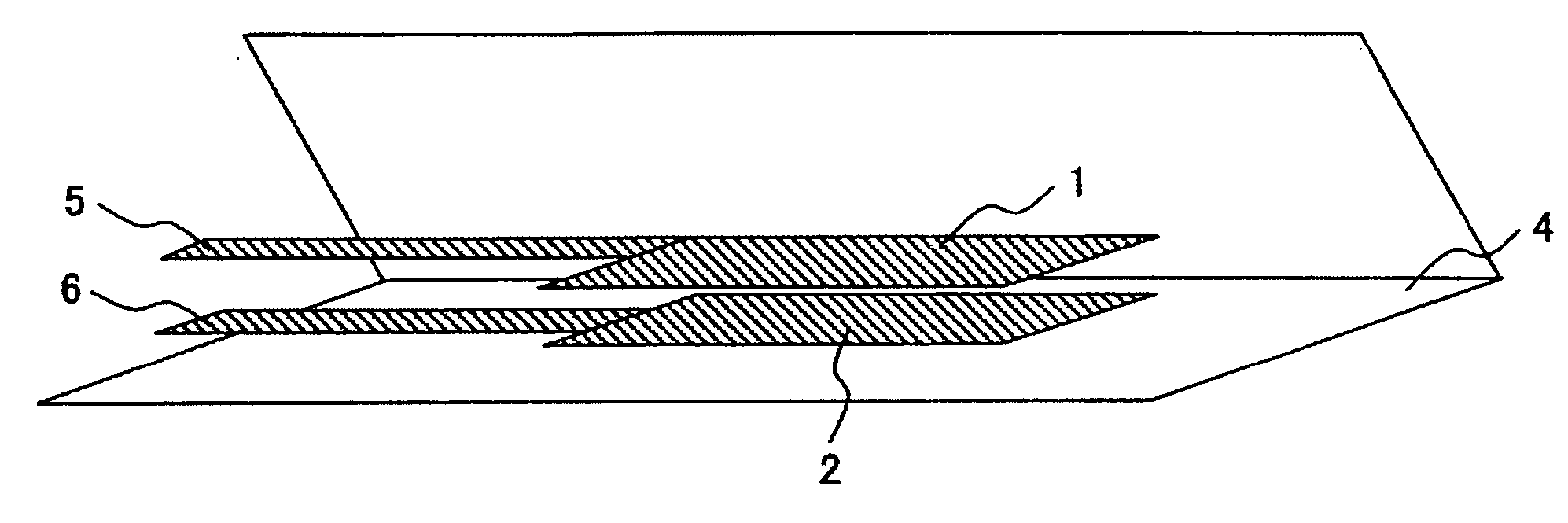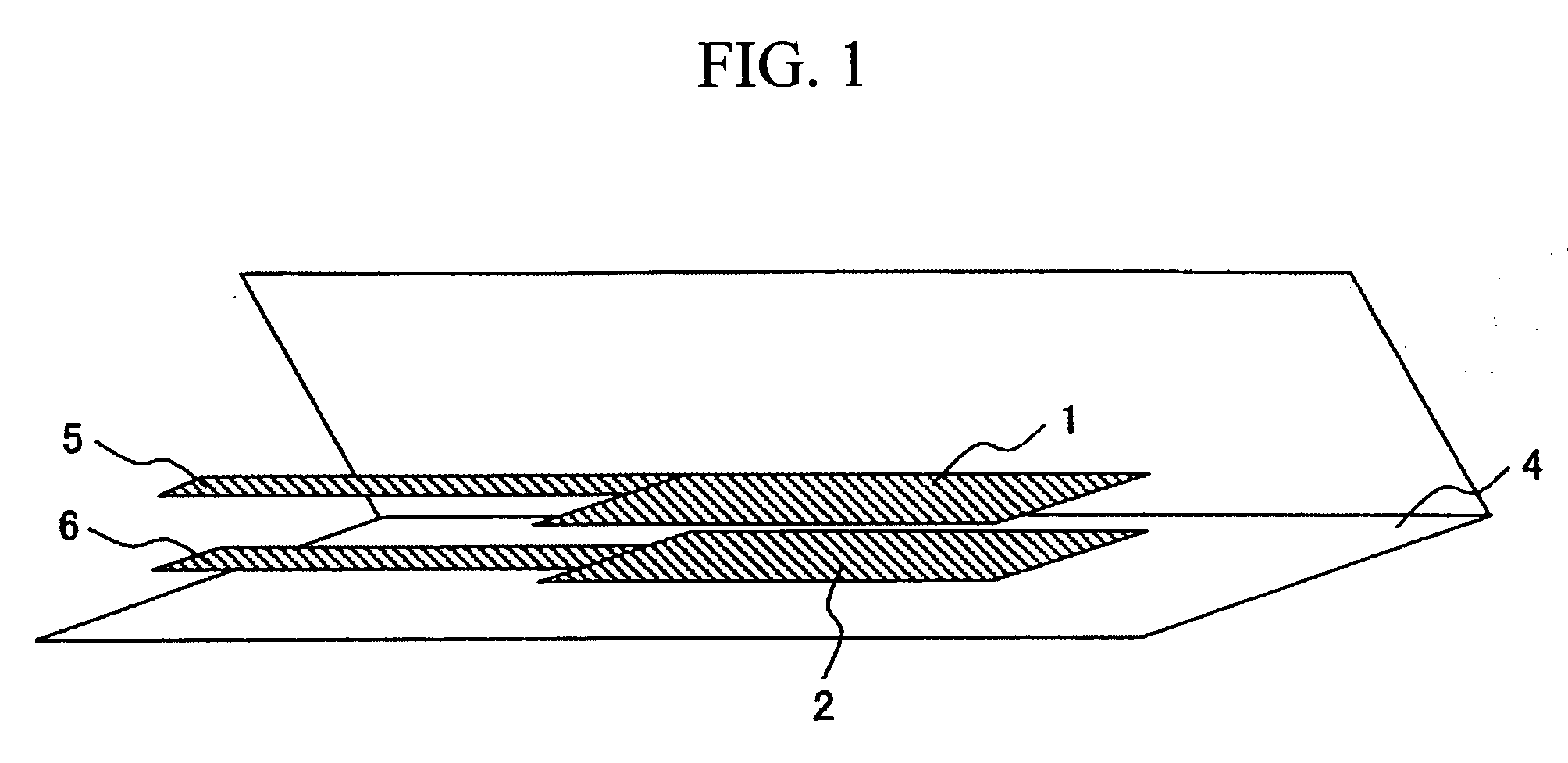Electrolyte and lithium secondary battery
a lithium secondary battery and electrolyte technology, applied in the field of electrolyte and lithium secondary batteries, can solve the problems of low ionic conductivity and problematic solid electrolytes made of organic polymers, and achieve the effects of improving ionic conductivity, superior reliability and safety, and easy hopping
- Summary
- Abstract
- Description
- Claims
- Application Information
AI Technical Summary
Benefits of technology
Problems solved by technology
Method used
Image
Examples
example 1
[0028] For 1 g of polyethylene carbonate (number-average molecular weight: 50000; manufactured by PAC Polymers Inc.), LiN(C2F5SO2)2 (manufactured by Aldrich Chemical Co.) was mixed as an electrolyte salt with dimethyl carbonate at a molar ratio of 0.4 with respect to the carbonate group. To this mixture was further added diglyme as an organic solvent at a ratio of 15 parts by weight with respect to 100 parts by weight of polyethylene carbonate, thereby preparing a mixture solution (1). The mixture solution (1) was then applied to a Teflon (trademark; the same applies below). After allowing it to stand in argon at room temperature for 24 hours, it was then allowed to stand in argon at 80° C. for 12 hours and was further subjected to vacuum drying at 80° C. for 12 hours, thus resulting in an electrolyte (thickness: 100 μm).
[0029] The resultant electrolyte film was cut into a circular plate with a diameter of 1 cm, which was then sandwiched between a pair of stainless steel electrodes...
example 2
[0030] Evaluation was conducted in the same manner as in Example 1 except that LiC(CF3SO2)3 was used instead of LiN(C2F5SO2)2 as the electrolyte salt in Example 1. The results are shown in Table 1.
example 3
[0031] Evaluation was conducted in the same manner as in Example 1 except that LiN(CF3SO2)2 was used instead of LiN(C2F5SO2)2 as the electrolyte salt in Example 2. The results are shown in Table 1.
PUM
| Property | Measurement | Unit |
|---|---|---|
| Percent by mass | aaaaa | aaaaa |
| Percent by mass | aaaaa | aaaaa |
| Electrical conductivity | aaaaa | aaaaa |
Abstract
Description
Claims
Application Information
 Login to View More
Login to View More - R&D
- Intellectual Property
- Life Sciences
- Materials
- Tech Scout
- Unparalleled Data Quality
- Higher Quality Content
- 60% Fewer Hallucinations
Browse by: Latest US Patents, China's latest patents, Technical Efficacy Thesaurus, Application Domain, Technology Topic, Popular Technical Reports.
© 2025 PatSnap. All rights reserved.Legal|Privacy policy|Modern Slavery Act Transparency Statement|Sitemap|About US| Contact US: help@patsnap.com



